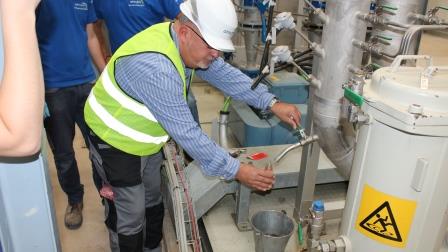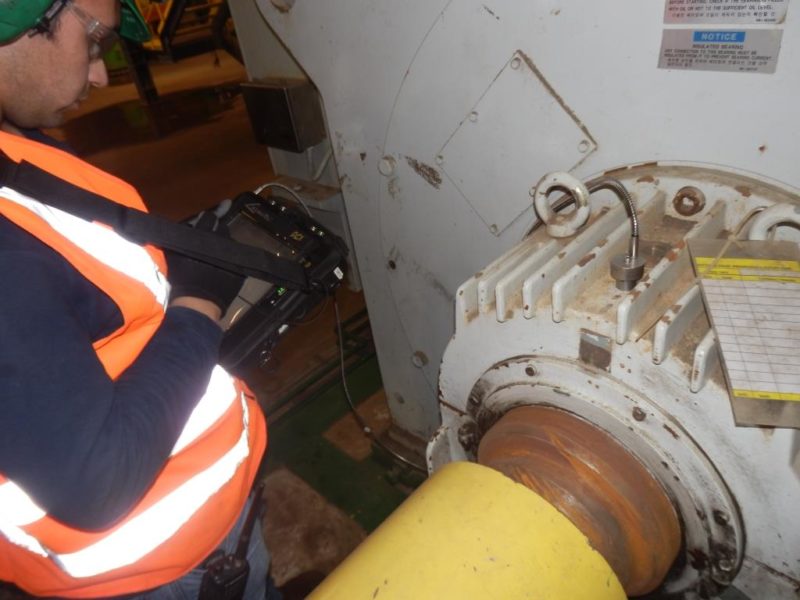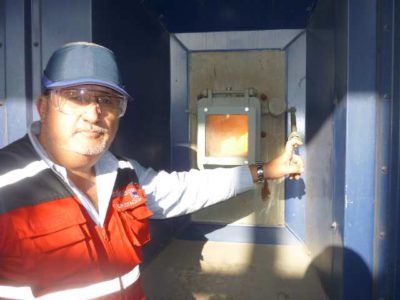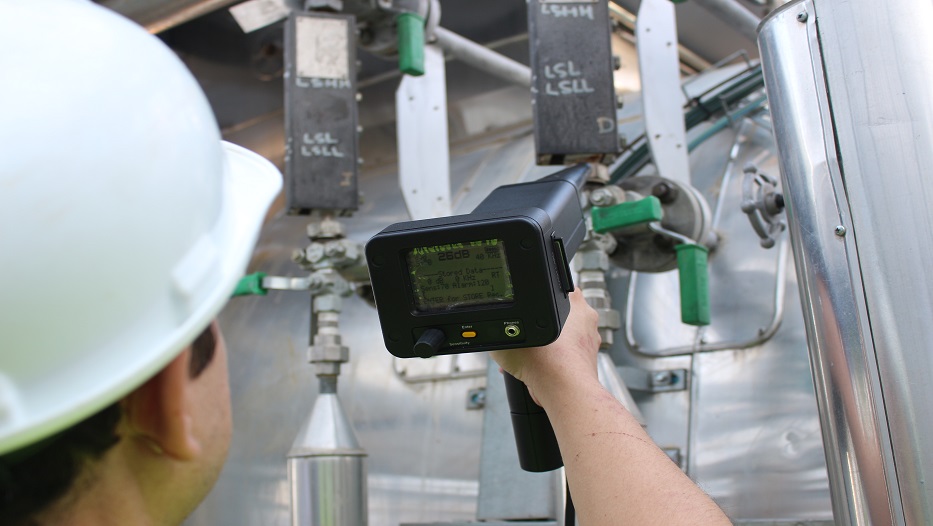admin | 20/11/2018
Basing facility maintenance on prior diagnostics of equipment and systems, generically referred to as condition-based maintenance (CBM), is a maintenance strategy that for many businesses has delivered on two fundamental maintenance objectives: decreased costs and increased availability of production equipment. For many businesses, quickly delivering these results means arriving at the road to profitability and a competitive advantage, while for others it means seeing profits that are better than what would have been achieved following other maintenance strategies like simply fixing malfunctions or attending only to the minimum recommendations provided by the equipment manufacturer. This article reviews the key principals of CBM and its advantages compared to other strategies.
Maintenance costs for a medium to large sized facility are around 2% to 3% of the total annual cost of the facility. This means that for a business with an asset replacement value of €100 million, maintenance could represent between two and three million euros per year, including personnel, contracts with external companies and materials. For many businesses, this cost may be perfectly tolerable if it represents very little in comparison to its revenue. For others, though, it may represent a struggle to be more competitive, a struggle even for its very survival. Therefore, cost reduction becomes imperative. A “courageous” approach to cost reduction is to allocate a small budget to maintenance, and the department itself must try to manage it as best it can. This type of solution, blindly created from the finance department, has not produced good results given that the only thing it manages to do is to push out costs that in the future will be even higher than those they are trying to save on in the short term. It should be noted that what is done today in regard to a facility’s maintenance management, produces results six months later at the earliest.
Nonetheless, there are smart, efficient ways to have the same impact – to reduce annual maintenance costs without sacrificing service life and without increasing future costs. One of these options is maintenance based on prior equipment assessment. Condition-based maintenance decreases costs to amounts varying between 1 and 1.5 of the facility cost, without compromising availability or production nor increasing the likelihood of an accident. In fact, availability and production normally increase and the accident rate decreases.
A quick review of the other options is required to better understand what CBM is and what its outcomes are. The first alternative, used by many companies and which generally yields unsatisfactory results both in cost and availability terms, and even from an accident rate perspective, is to base maintenance on fixing the malfunctions that arise.
Condition-based maintenance decreases costs to amounts varying between 1 and 1.5 of the facility cost, without compromising availability or production nor increasing the likelihood of an accident.
Maintenance based on fixing malfunctions
This is a purely reactive strategy whereby one waits until the different machinery that makes up the facility has a defect and then takes action to fix it. In this approach, production loses reliability and even costs are not certain, varying significantly from one year to another, depending on the defects that might occur. Of course, when a defect occurs, it tends to be much more serious than it would have been if the signs had been detected beforehand.

Maintenance based on equipment service life
With this corrective strategy, the possibility exists to base maintenance exclusively on the manufacturer’s recommendations. These recommendations tend to lead to a systematic maintenance strategy – to perform a series of tasks depending on equipment operating hours or periods of time – which in many cases entails the replacement of certain components, as these components have reached the end of their service life. This is how it is estimated that a ball bearing lasts X hours, that a filter has to be changed every so often, or that certain large scale components (like steam and gas turbines, reciprocating engines, pumps, compressors, etc.) have to be disassembled and internal parts substituted, because they have reached a certain number of hours of operation or else it has been determined that a facility’s equipment has to be subject to a significant overhaul every so often.
With CBM, downtime due to malfunctions is reduced.
Consition-based maintenance (CBM)
The condition-based maintenance strategy, or CBM, diverges from the approach of systematically replacing parts, which assumes the end of its service life as estimated by the manufacturer. On the other hand, CBM suggests that equipment only needs maintenance when there is some sign of degradation. In the twenty-first century there are many techniques to assess if equipment has experienced degradation, and the majority are non-invasive; in other words conducting the assessment would not easily lead to damage of the equipment. Additionally, these techniques facilitate the determination of whether the equipment components have truly reached the end of their service life or not. This allows for the minimization of the number of maintenance procedures that are performed on the equipment because only those that are truly required are done, when some symptom of degradation is detected in an early phase.
Diagnostic techniques
CBM tends to be associated with what for a long time was known as “predictive maintenance” that is the full series of techniques aiming to establish a relationship between certain physical variables and the degradation that is observed in machinery, all measured by equipment of a certain value and complexity. Although it is true that these types of techniques (vibration analysis, thermography, borescope assessments, oil analysis, ultrasound analysis, etc.) end up being very useful – and almost indispensable – in CBM they are far from being the most important nor the most common way of discovering the greatest number of incidents in a facility.
The diagnostic techniques in which CBM is based can be grouped into four categories.
- OPERATIONAL ROUNDS: Operational rounds are a series of activities, generally inspections, conducted by factory operators. They basically consist of sensory inspections and functional tests. The frequency is relatively high and may end up being performed daily or even every few hours. Operators discover almost 40% of the problems in an early phase because many of the machine’s problems can be detected on sight.

CBM allows for a continued good service condition lasting much longer than the service life that is generally defined for industrial equipment.
2. DETAILED SENSORY INSPECTIONS Detailed sensory inspections are inspections carried out by maintenance specialists (mechanics, electricians, and experts in instrumentation) with expertise in the respective area. Although they fundamentally deal with functional tests and sensory inspections, they sometimes involve machine downtime or specific disassembly. They generally include all the routine operational tasks and other tasks that cannot be carried out by operators. The frequency of each of these tasks can vary, although these kind of inspections are often carried out quarterly. This is because many of the defects that emerge in a facility have an incubation period of greater than three months; therefore, with quarterly inspections it is possible to identify the gestation of specific problems.
3. GAUGING OFFLINE EQUIPMENT Analysis using off-line measuring equipment involves establishing a relationship between specific physical variables (vibration, surface temperature, generation of a specific sound, etc.) with the state of degradation observed in the machinery. Traditionally, they have been called predictive maintenance techniques, although in reality the concept of “predictive maintenance” doesn’t exist as such. The use of these techniques does not enable exact predictions about when a malfunction will occur, nor is it truly maintenance because it doesn’t address the degradation in materials caused by time or use. These techniques, which are also often performed quarterly, refer to vibration assessments, thermography, borescope inspections, ultrasound analysis, etc., and they have the common feature that the technician conducting them brings the equipment with them, assembles it, gets the measurements, and draws the conclusions from these observations.
4. ONLINE DATA ANALYSIS Nowadays equipment is monitored and instrumentalized, and has sensors to capture many of the functional parameters online. From the reading of these functional parameters and bearing in mind that there are variables that should be fixed within a static range and others fixed in dynamic ranges, it can be determined if equipment is functioning correctly or not.
Advantages compared to other strategies
As detailed in this article, condition-based maintenance can deliver considerable advantages to maintenance for the majority of facilities that we work with. These advantages are mainly related to cost reduction because, if in a systematic strategy costs don’t usually fall below 2% or 3% of the total facility cost, for condition-based maintenance it is normal to get to a ratio of between 1 and 1.5% of the total facility cost including personnel, materials, and service contracts with third parties.
The second big advantage refers to availability, as downtime due to systematic maintenance is drastically reduced. Additionally, downtime caused by malfunctions resulting from conducting unnecessary inspections is reduced: equipment is put at risk each time it is opened, as opening it can cause new damage to the equipment.
The third and final advantage relates to service life of the facility: a well-monitored piece of equipment, whose state is known and which is subject to maintenance as soon as a problem is detected, has a good-working state lasting much longer than the service life generally established for industrial equipment.
Author profile

Santiago García Garrido
Santiago García Garrido
Technical Director, RENOVETEC
Santiago García Garrido has a degree in chemical sciences and a doctorate in Naval Engineering. He has been the director of the San Roque combined cycle thermal power plant, the first of its kind to start up in Spain, and has held several responsibilities roles in companies such as Duro Felguera and Gas Natural. He is currently Technical Director of RENOVETEC and President of the Spanish Association of Maintenance Engineering.





